|
Rift Valley fever virus (RVFV) infects humans and livestock, causing haemorrhaging and abortions in animals. Three major RVF epizootics have occurred in South Africa since the 1950s and the outbreak in 2010 had a mortality rate of 10.7% in humans. Accurate and early detection is therefore essential for management of this zoonotic disease. Enzyme-linked immunosorbent assays (ELISAs) have been developed for the detection of either IgM or IgG antibodies to RVFV in animal sera. In this study, data are presented on the validation of a double-antigen ELISA for the simultaneous detection of both classes of antibodies to RVFV in a single test. ELISA plates were coated with a recombinant nucleoprotein. The nucleoprotein, conjugated to horseradish peroxidase, was used as the detecting reagent. A total of 534 sera from sheep and cattle were used in the validation. The sheep sera were collected during a RVF pathogenesis study at the Agricultural Research Council (ARC) – Onderstepoort Veterinary Institute and the cattle sera were collected during an outbreak of RVF in 2008 at the ARC – Animal Production Institute in Irene, Pretoria. The ELISA had a diagnostic sensitivity of 98.4% and a specificity of 100% when compared to a commercial cELISA. This convenient and fast assay is suitable for use in serological surveys or monitoring immune responses in vaccinated animals.
Rift Valley fever virus (RVFV) belongs to the genus Phlebovirus, family Bunyaviridae (Bishop et al. 1980) and infects humans and livestock, primarily causing haemorrhaging and abortions in animals. The virus is mainly transmitted by mosquitoes, is endemic throughout much of Africa and, in recent years, has also spread to Saudi Arabia and Yemen. Three major RVF epizootics have occurred in South Africa, in 1950–1951, 1973–1975 and, more recently, 2008–2011 (Métras et al. 2012). During the outbreak of 2010, 242 human cases were confirmed with a mortality rate of 10.7% (National Institute for Communicable Diseases 2011). During the 2011 outbreak, 32 human cases were confirmed, with no fatalities. In non-endemic countries, RVFV is a concern as a potential agent for bioterrorism. Accurate and reliable diagnosis of RVF and efficient surveillance of the disease are therefore essential. Rift Valley fever virus is an enveloped bunyavirus with a tri-segmented, negative-sense RNA genome. The large (L) segment encodes the viral RNA-dependent RNA polymerase, whilst the medium (M) segment encodes the external glycoproteins (Gn and Gc) and the non-structural protein (NSm). The small (S) segment is ambisense, coding for the nucleoprotein (N) in the antigenomic sense and the non-structural protein (NSs) in the genomic direction (Pepin et al. 2010). Within the virion, the Gn and Gc are expressed as a precursor polypeptide. These glycoproteins, being exposed on the outer surface of the virus during infection, are recognised by the host immune system and induce the production of neutralising antibodies. The N protein, Gn and Gc all elicit the production, firstly, of IgM and then IgG RVFV-specific antibodies from day 4 – day 8 after infection (Jansen van Vuren et al. 2007; Williams et al. 2011). Various techniques are used for the diagnosis of RVF, including virus isolation, virus neutralisation, antigen detection, polymerase chain reaction (PCR) and detection of specific antibodies. Virus isolation and virus neutralisation tests take days to perform and present a health hazard to laboratory staff. For this reason, there is a trend to use recombinant antigens in an enzyme-linked immunosorbent assay (ELISA) format. Most of the ELISAs employ the recombinant N-protein (Fafetine et al. 2007; Jansen van Vuren et al. 2007; Williams et al. 2011). Recently, a new ELISA was described using the Gn protein expressed in an insoluble form in Escherichia coli (Jäckel et al. 2013). Previously, we reported the development and validation of an IgG and IgM ELISA that uses a recombinant N-protein of RVFV (Williams et al. 2011). The disadvantage of these ELISAs is that two separate tests have to be performed, one to detect IgM and another to detect IgG in sera. The development and validation of a double-antigen ELISA (dAg ELISA) for RVF, which detects both IgM and IgG in one test, are described in this study. The assay uses a recombinant N-protein (rN) expressed in E. coli as the capture antigen and a rN-horseradish peroxidase (HRP) conjugate for detection – hence the term dAg ELISA. The main advantage of the dAg ELISA is that it is non-species specific, as is the case with the previously validated IgG and IgM ELISA. The commercial cELISA (IDVet Innovative Diagnostics, Grabels, France) has the same advantages, but is very expensive, making it impractical for routine use (Comtet et al. 2010). Although the dAg ELISA is useful for detecting the presence of RVFV-specific antibodies, it cannot differentiate between IgM and IgG classes of antibody. However, this limitation can be overcome by performing follow-up testing using the IgM capture ELISA described previously (Williams et al. 2011).
|
Research method and design
|
|
Recombinant nucleoprotein preparation
A cDNA encoding of the N protein gene of RVFV was inserted into a pStaby expression vector (Delphi Genetics Inc., Charleroi, Belgium) with a protein tag to facilitate purification of the expressed rN. SE1 E. coli cells (Delphi Genetics Inc., Charleroi, Belgium) were transformed with this plasmid and glycerol stocks of the transformants prepared. For expression of rN, an overnight inoculum was prepared in 20 mL Luria Broth (LB) and the next day upscaled to
1000 mL – 2000 mL LB culture. After induction with 1 mM IPTG overnight at 18 °C, the cells were harvested and lysed with BugBuster, containing Benzonase and recLysozyme (all from Merck KGaA, Darmstadt, Germany). The cleared cell lysate was used to purify the rN on a metal chelate affinity chromatography column (Williams et al. 2011). The rN-HRP was prepared as described by Williams et al. (2011).
Pre-coating and pre-blocking of plates
The optimal dilution of the antigen was predetermined using a checker-board titration (Crowther 1995). Nunc Polysorp plates (Nunc, Roskilde, Denmark) were coated with
diluted rN in PBS at 100 µL per well. The plates were incubated overnight at room temperature. The following day, they were washed three times with
300 µL TST washing solution (50 mM Tris/150 mM NaCl/0.1% Tween 20, pH 8.0) per well and then blocked with 100 µL of 1 × Stabilcoat buffer
(Surmodics Inc., Eden Prairie, Minnesota, USA) per well. After 1 h at room temperature, the solution was discarded without washing and the plates tapped gently
on paper towelling to remove remaining solution. The plates were then dried for 2 h in a laminar flow cabinet, vacuum sealed and stored at 4 °C – 8 °C until
required.
Double-antigen ELISA procedure
The pre-coated, pre-blocked ELISA plates were equilibrated to room temperature and 50 µL of dilution buffer (3% non-fat milk powder in TST buffer) was added to each well. Thereafter, 50 µL of control or serum samples were added (the dilution buffer only served as the conjugate control). The plates were incubated for 45 min at room temperature and then washed three times with TST buffer. The
rN-HRP conjugate was diluted in dilution buffer and 100 µL added per well. The plates were then incubated for 30 min at room temperature and washed as before,
after which 100 µL of TMB ready-to-use substrate (Invitrogen Corporation, Frederick, Maryland, USA) was added to each well and incubation was performed in the
dark for 10 min. Then, 100 µL of stop solution (2 N H2SO4) was added per well and the absorbance was read at A450 nm. The raw absorbance
(A) values were expressed as a percentage positive (PP) of the positive control, using the following formula:
 IgM capture ELISA
IgM capture ELISA
The RVFV-specific IgM capture ELISA was used as part of this study to confirm outlier results (Williams et al. 2011).
Rift Valley fever competition ELISA
A commercial, indirect competition ELISA (cELISA) kit (ID Screen Rift Valley fever multi-species ELISA; IDVet Innovative Diagnostics, Grabels, France) was used
according to the manufacturer’s instructions for detecting RVFV-specific antibodies. Given that it has a validated diagnostic sensitivity and specificity
of 100%, the kit was used as the standard reference for evaluating the dAg ELISA. The results were calculated as competition percentage, using the following formula:
 A suspect or negative (S/N) value of ≤ 40% was considered to be positive.
A suspect or negative (S/N) value of ≤ 40% was considered to be positive.
Panel of sera included in the validation of the double-antigen ELISA
An RVF pathogenesis study was performed in sheep using a dose-titration approach at the Agricultural Research Council – Onderstepoort Veterinary Institute (ARC–OVI) as part of the development and evaluation of a recombinant RVFV vaccine. This study provided an opportunity to collect a large panel of sera for the validation of the dAg ELISA. Briefly, 30 6-month-old Merino sheep, confirmed sero-negative for RVFV, were divided randomly into five equal groups and infected intravenously with a virulent South African RVFV strain (M35/74), using titres ranging from 102 to 106 plaque-forming units (PFU) per animal per group. Blood samples were collected daily for the first 10 days post infection (PI) and then every fourth day until the end of the trial on day 27 PI. All samples were tested using both the dAg ELISA and a commercial cELISA. For the purposes of this validation, the results of the dAg ELISA were compared with those of the cELISA. The cELISA detects antibodies to RVFV N protein and, according to the manufacturer, has a 100% diagnostic sensitivity and specificity when compared to the serum neutralisation test. A total of 412 sera from the RVF pathogenesis study were tested and compared in the dAg ELISA and the cELISA, of which 216 were positive and 196 negative. In addition, 121 bovine sera from a natural RVF outbreak in 2008 on the farm at the ARC – Animal Production Institute (Irene, Pretoria) were included, of which 26 were positive and 95 negative. The results of all sera tested were included in the receiver operating characteristic (ROC) analysis to determine the cut-off value for the dAg ELISA.
All samples were tested using both the dAg ELISA and a commercial cELISA. For the purposes of this validation, the results of the dAg ELISA were compared with those of the cELISA.
Titration of the recombinant nuceloprotein horseradish peroxidase conjugate
The rN-HRP conjugate was titrated on a pre-coated, pre-blocked RVFV IgG ELISA plate to determine the optimal dilution of the conjugate to be used in the validation of the dAg ELISA. This was determined to be 1:640, where the absorbance (A450) of the positive control was ≥ 1.00 and that of the negative control was 0.02 (Figure 1).
 |
FIGURE 1: Two-fold serial dilution of the recombinant nucleoprotein horseradish
peroxidise conjugate on pre-coated ELISA plates to determine the optimal
dilution for use in the double-antigen ELISA.
|
|
Repeatability of the double-antigen ELISA
The stability of the rN antigen-coated plates was established previously as part of the validation of the RVFV IgG ELISA (Fafetine et al. 2007). Each control was tested in quadruplicate wells on each plate and served as internal quality controls. The repeatability of the positive control, negative control and the conjugate control was demonstrated with the average and the standard deviation for 15 individual plates tested on 15 different days (Figure 2). The A450 nm of the positive serum ranged between 0.70 and 1.80, of which the negative control was < 0.10 and the conjugate control < 0.03. (A450 nm of < 0.10 for the negative control is acceptable for an ELISA validation). The percent coefficient of variance (% CV) within plates varied between 1.30% (lowest) to 12.50% (highest). The % CV of the positive control between the 15 plates was 20.49%.
 |
FIGURE 2: Repeatability of the double-antigen ELISA when tested with the control
sera for (a) the positive control, (b) negative control and (c) conjugate control.
|
|
Analytical specificity
Although the possibility of cross-reacting antibodies being detected by the dAg ELISA was not addressed here, previous antigenic cross-reactivity studies in sheep (Swanepoel et al. 1986) and field studies in cattle (Davies 1975; Swanepoel 1976) did not find any cross-reactivity of sera from RVFV-infected convalescing animals with any other African phleboviruses.
Analytical sensitivity
To determine the detection limit of the dAg ELISA and the cELISA, serial two-fold dilutions of the positive control were made and tested in both ELISAs. The results are presented for the titrations of the positive control (Figure 3). In both ELISAs, the undiluted positive control was used to calculate the PP values of the dilutions.
 |
FIGURE 3: Analytical sensitivity of the double-antigen ELISA compared to the
cELISA for the detection of the positive control and dilutions thereof.
|
|
Diagnostic accuracy
All samples were tested with the dAg ELISA and commercial cELISA. For the purposes of this validation, the results obtained using the dAg ELISA were compared with those obtained for the cELISA. The average antibody titres of the sera from infected sheep were used to plot the mean of the dAg ELISA and cELISA results (Figure 4). The IgM and IgG serological immune responses of the sheep after infection with RVFV strain M35/74 are presented in Figure 4. In addition, the separate responses for IgM and IgG were also plotted on this graph, as mentioned, using the individual IgG and IgM ELISAs. The first detectable antibodies occurred at day 5 PI, with the first peak in levels between day 6 PI and day 9 PI, as measured using the cELISA and dAg ELISA, which correlated with the IgM response as supported by the IgM capture ELISA. Both the cELISA and dAg ELISA then showed a decrease in antibody levels, corresponding to a drop in IgM levels. From day 9 PI, IgG antibodies were detectable (IgG indirect ELISA), rising sharply until day 14 PI, then remaining relatively constant, but with a slight rise, until day 27 PI, the last day of sampling of the animals. However, with the dAg ELISA, a steady downward trend was observed from day 10 PI until day 14 PI, then continuing in line with the IgG response of the indirect IgG ELISA until day 27 PI. The PP values for the sera from the negative and positive reference groups are plotted in Figure 5. Of the 291 negative sera tested, 286 had PP values of ≤ 20%, whilst only five had PP values of ≥ 20% but ≤ 40% – and of the 243 positive sera tested, only two sera had PP values of ≥ 20% but < 40%, whilst the remainder had PP values of ≥ 45%. A selected cut-off value (positive–negative threshold) should differentiate optimally between subpopulations of infected and uninfected animals. A ROC curve analysis (GraphPad Prism 5.0 2010) was performed on the 291 negative and 243 positive sera using a 95% confidence interval (Table 1). The ROC curve of the dAg ELISA sera data used in this study had an area under the curve equal to 0.998. The sensitivity and specificity of the dAg ELISA was plotted against the entire range of possible PP values (Figure 6). The cross-over point of the two lines indicates
the PP value for optimum sensitivity and specificity, in this case a PP of
> 30.0%, where the likelihood range is the largest, namely 288.6, with the sensitivity calculated at 99.2% and the specificity at 99.7%. By including a suspect
range of values between 30.0% and 40.0%, the sensitivity was calculated at 98.4% and the specificity at 99.7% (Table 2).
|
TABLE 1: Receiver operating characteristic curve analysis of the double-antigen ELISA.
|
|
TABLE 2: Cut-off value ranges for the double-antigen ELISA.
|
 |
FIGURE 4: Average anti-Rift Valley fever virus nucleoprotein-specific antibody
titres in sheep sera collected after infection with virulent Rift Valley fever virus.
|
|
 |
FIGURE 5: Average anti-Rift Valley fever virus nucleoprotein-specific antibody
titres in sheep sera collected after infection with virulent Rift Valley fever virus.
|
|
 |
FIGURE 6: Percentage positive values for the negative (n = 291) and positive (n = 243) sera.
|
|
Diagnostic sensitivity and specificity
The selection of a cut-off value allowed test results to be divided into positive or negative categories. The dAg ELISA results of the sera were classified as true positive or true negative if they were in agreement with the cELISA results or, alternatively, as false positive or false negative if they differed from the cELISA results. In some instances, the results of the IgM capture ELISA were taken into consideration. If the cut-off value of ≥ 40% was used as positive, the sera were classified accordingly (Table 3). Some outliers are included in Table 4. With the IDVet cELISA, a number of the sera were classifiable as negative or suspect, but were positive in the IgM ELISA. These sera were obtained on day 4 PI or day 5 PI when the IgM antibodies were first measurable. The cut-off point for a positive result in the IgM ELISA was calculated at PP values of > 7%.A number of the sera tested negative or suspect using the cELISA (sera #231, #234, #192), but tested positive in the IgM and the dAg ELISAs. Serum #216 and serum #191 were positive in the IgM ELISA, but suspect in the dAg ELISA and negative, or suspect, in the cELISA. None of these sera had detectable levels of IgG. The IgG level only started to appear from day 9 to 10 after inoculation.
|
TABLE 3: Summary of diagnostic sensitivity and specificity.
|
|
TABLE 4: Outliers as tested using the three ELISAs.
|
Ethical approval for all procedures involving the RVF pathogenesis trial in sheep was granted by the ARC-OVI Animal Ethics Committee, Pretoria, South Africa.
The RVFV outer surface glycoproteins, Gn and Gc, induce the production of neutralising antibodies, which afford protection in infected and vaccinated animals (Collett et al. 1985). However, the N protein is the most immunodominant antigen when compared to the glycoproteins, as it elicits higher levels of antibodies when analysed on Western blots containing the viral proteins (data not shown) and is highly specific for RVFV (Jansen van Vuuren et al. 2007; Williams et al. 2011). When expressed in E. coli, the recombinant N-protein is soluble and has excellent stability at 4 °C (Fafetine et al. 2007). Pre-coated ELISA plates have a shelf life of at least two years when sealed and stored at 4 °C (data not shown). Production of the recombinant N-protein is very convenient when compared to the risks involved in working with live RVFV and the processes required for viral inactivation. The soluble nature of the antigen allows for conjugation to HRP, making it ideal for use in diagnostic ELISAs.In this study we developed and compared a dAg ELISA using recombinant RVFV N-protein. The major advantage of the dAg ELISA and the commercial cELISA with which it was compared is that they can simultaneously detect IgM and IgG classes of antibody and neither is species-specific. The dAg ELISA has a diagnostic sensitivity and specificity of 98.4% and 100%, respectively, whilst its analytical sensitivity compares favourably with the cELISA. However, the main reason for developing and using the dAg ELISA in-house is that it is affordable and therefore accessible to diagnostic veterinary laboratories of many developing countries where RVF is endemic.
The data presented in this study show that the dAg ELISA can be used as a safe, reliable, fast and highly accurate diagnostic tool, with good potential for use in serological surveys or for monitoring immune responses in vaccinated animals.
This research project was funded in part by GALVmed. The authors wish to thank the ARC-OVI Transboundary Animal Diseases Programme team for animal care, sample collection and processing during the RVFV pathogenesis study.
Competing interests
The authors declare that they have no financial or personal relationships which may have inappropriately influenced them in writing this article.
Authors’ contributions
The ELISA validation was performed by V.E.M. (ARC-Onderstepoort Veterinary Institute) The rN production, purification and rN-HRP conjugate preparation was undertaken by C.E.E. (ARC-Onderstepoort Veterinary Institute). The manuscript was written and submitted by C.E.E., with editing by R.W. (ARC-Onderstepoort Veterinary Institute), D.B.W. (ARC-Onderstepoort Veterinary Institute) and P.A.O.M. (ARC-Onderstepoort Veterinary Institute). P.A.O.M. is the manager of the Molecular Epidemiology and Diagnostics Programme; D.B.W. was the project manager for the RVFV pathogenesis study that generated most of the diagnostic samples used for this validation.
Bishop, D.H., Calisher, C.H., Casals, J., Chumakov, M.P., Gaidamovich, S.Y., Hannoun, C. et al., 1980, ‘Bunyaviridae’, Intervirology 14, 125–143.
PMid:6165702
Collett, M.S., Purchio, A.F., Keegan, K., Frazier, S., Hays, W., Anderson, D.K. et al., 1985, ‘Complete nucleotide sequence of the M RNA segment of Rift Valley fever virus’, Virology 144, 228–245.
PMid:2998042
Comtet, L., Pourquier, P., Marié, J-L., Davoust, B. & Cêtre-Sossah, C., 2010, ‘Preliminary validation of the ID Screen® Rift Valley fever competition multi-species ELISA’, poster presented at the EAVLD meeting, Lelystad, the Netherlands, 15–17 September. Crowther, J.R., 1995, ELISA theory and practice. Methods in molecular biology, Humana Press, Totowa. Davies, F.G., 1975, ’Observations on the epidemiology of Rift Valley fever in Kenya’, Journal of Hygiene 75, 219–219.
http://dx.doi.org/10.1017/S0022172400047252
Fafetine, J.M., Tijhaar, E., Paweska, J.T., Neves, L.C.B.G., Hendriks, J., Swanepoel, J.R. et al., 2007, ‘Cloning and expression of Rift Valley fever virus nucleocapsid (N) protein and evaluation of a N-protein based indirect ELISA for the detection of specific IgG and IgM antibodies in domestic ruminants’, Veterinary Microbiology 121, 29–38.
http://dx.doi.org/10.1016/j.vetmic.2006.11.008, PMid:17187944
GraphPad Prism version 5.0, 2010, GraphPad software Inc., San Diego. Jäckel, S., Eiden, M., Balkema-Buschmann, A., Ziller, M., Jansen van Vuren, P., Paweska, J.T. et al., 2013, ‘A novel indirect ELISA based on glycoprotein Gn for the detection of IgG antibodies against Rift Valley fever virus in small ruminants’, Research in Veterinary Science 95, 725–730.
http://dx.doi.org/10.1016/j.rvsc.2013.04.015,
PMid:23664015
Jansen van Vuren, P., Potgieter, A.C., Paweska, J.T. & Van Dijk, A.A., 2007, ‘Preparation and evaluation of a recombinant Rift Valley Fever virus N protein for the detection of IgG and IgM antibodies in humans and animals by indirect ELISA’, Journal of Virological Methods 140, 106–114.
http://dx.doi.org/10.1016/j.jviromet.2006.11.005, PMid:17174410
Métras, R., Porphyre, T., Pfeiffer, D.U., Kemp, A., Thompson, P.N., Collins, R.G. et al., 2012, ‘Exploratory space time analyses of Rift Valley fever virus in South Africa in 2008–2011’, PLOS Neglected Tr1005-SAJIP-Corr-JM1165-SAJIP-Corr-JM2953020 National Institute for Communicable Diseases, 2011, Rift Valley fever outbreak. Interim report on the 2011 Rift Valley Fever outbreak in South Africa, viewed 18 September 2012, from
http://www.nicd.ac.za/?page=rift_valley_fever_outbreak&id=94
Pepin, M., Bouloy, M., Bird, B.H., Kemp, A. & Paweska, J.T., 2010, ‘Rift Valley fever virus (Bunyaviridae: Phlebovirus): An update on pathogenesis, molecular epidemiology, vectors, diagnostics and prevention’, Veterinary Research 41(6), 61.
http://dx.doi.org/10.1051/vetres/2010033, PMid:21188836
Swanepoel, R., 1976, ’Studies on the epidemiology of Rift Valley fever’, Journal of the South African Veterinary Association 57, 93–94.
PMid:940102
Swanepoel, R., Struthers, J.K., Erasmus, M.J., Shepherd, S.P. & McGillivray, G.M., 1986, ’Comparison of techniques for demonstrating antibodies to Rift Valley fever virus’, Journal of Hygiene 97, 317–329.
PMid:3537118
Williams, R., Ellis, C.E., Smith, S.J., Potgieter, C.A., Wallace, D.B., Mareledwane, V.E. et al., 2011, ‘Validation of an IgM antibody capture ELISA based on a recombinant nucleoprotein for identification of domestic ruminants infected with Rift Valley fever virus’, Journal of Virological Methods 177(2), 140–146.
http://dx.doi.org/10.1016/j.jviromet.2011.07.011, PMid:21827790
|
